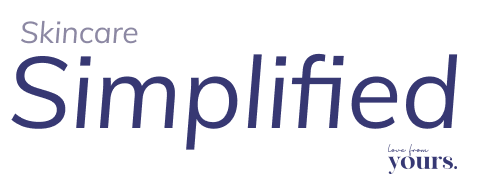What is Slugging?
Slugging – this isn’t the practice of plastering slugs onto your face but rather, to coat your face with Vaseline or any kind of occlusive as the last step in your skincare routine and leaving it on your face overnight.
To break it down simply, a skin occlusive is a moisturizing agent that stays comfortably on your face and protects it from any ingredients entering or leaving. The most common types of occlusives that can be readily found are Petroleum Jelly, Argan Oil, Squalene and Shea Butter.
Slugging gets its name from the slimy, shiny and translucent film covering your face – bringing to mind actual slugs, hence its name.
Slugging was made popular by K-Beauty gurus but in actual fact, had been practiced by many around the world years before, especially by the black community in the USA. It was common to coat your face in Vaseline during the winter months to protect your skin from the harsh and drying climate.
What are the benefits of Slugging?
Slugging prevents transepidermal water loss and maintains the “glow” in your skin. Transepidermal water loss is the water that your skin naturally loses due to evaporation caused by the environment that you’re in.
Slugging can also lead to benefits like a repaired skin barrier, diminished appearance of wrinkles, improved effectiveness of your skincare and overall, healthier smoother and softer skin.
Repaired Skin Barrier – Our skin naturally gets damaged by the environment that we live in, whether by the sun’s powerful rays, by pollution or even by simply using too many harsh skincare products. The end result of this is that our moisture barrier gets damaged and needs help to restore it back to its normal self.
Slugging helps to do this by creating a prolonged moist environment that allows your moisture barrier to slowly repair itself.
Diminishing Wrinkles – Aging causes a struggling moisture barrier. With aging, your skin’s ability to retain moisture, regenerate new skin cells and overall to preserve that dewy look in your face slowly decreases. Slugging helps to lock in moisture by acting as a protective barrier, which in turn combats the common causes that result in wrinkles.
Your Skincare Works Harder For You – By protecting your face with a protective skin occlusive, your products remain a lot longer on your face. This allows the active ingredients in those products to penetrate your skin barrier more deeply for a longer period of time as compared to leaving on your skincare without an additional layer of protection.
Is Slugging suitable for all skin types?
Naturally, it’s best for those with dry skin types who can “slug” their face and create a more dewy and moist environment for their skin cells to regenerate.
Slugging also works wonders on mature skin to combat aging and overall, keep that fresh and healthy glow going. As we age, our bodies produce less collagen, leading to our skin becoming less “bouncy” and more dry. Slugging is a great way to prevent this by helping to keep moisture in our skin.
If you live in dry and humid climates where you’re prone to losing a lot of moisture due to your environment, slugging is a great option to preserve your moisture barrier.
When slugging is unsuitable for skin: If you have acne-prone, oily or combination skin, slugging may not be the best step to include in your skincare routine. This is because it leaves a greasy and thick feeling that can be very uncomfortable for those who fall within these skin types.
How do you incorporate Slugging into your skincare routine?
It’s best to slug your face at night as opposed to in the morning. This is so we can make sure that our skin is as clean as possible before applying an occlusive and make sure it remains on our face for the longest possible time. Also, your daycare routine should end with applying sunscreen and it would be uncomfortable to coat your face right after.
In general, this is how slugging works:
- Wash your face thoroughly with a gentle cleanser first. As mentioned, slugging covers your face and “traps” your active ingredients and this includes the dirt and oil in your pores.
- Continue with your usual skincare routine like your serums and moisturizers while excluding more powerful ingredients like retinoils, retinoids, BHAs, and AHAs.
- Now apply your protective “slugging” layer – a small amount should be sufficient to apply evenly on your face before heading off to bed. (Try to sleep with your body facing up, to avoid dirtying your pillow!)
- It’s best to clean your face in the morning from its shiny layer – this ensures you have a clean and bare face that’s free from any dirt or impurities that may have accumulated during the night
While many (especially on TikTok!) prefer to slug their face everyday, dermatologists are still divided in their opinion with some saying that it would be overkill to coat your face daily and that in order for our skin cells to function naturally and properly, we still need some level of transepidermal water loss.
Ultimately, it’s best to take responsibility for our own skincare routine and understand our skin needs won’t always reflect the experience of others – recognize what your skin needs are before switching up your skincare routine.
The “Don’ts”
Avoid using active ingredients like alpha-hydroxy acids(AHA), beta hydroxy acids (BHAs), or retinoids when slugging. Slugging makes your active ingredients more powerful and this might end up leading to skin irritation, making the whole process counterproductive.
If you’re experiencing breakouts, avoid slugging for the moment because you don’t want to retain all the impurities or bacteria from your breakouts.
Our final verdict…
Slugging is a great, inexpensive but optional step to include in your skincare routine if you’d like to glow up and experience the full effect of all your active ingredients in your skincare. As a final pampering touch, slugging is sure to leave your face feeling smoother and softer, so that you can start your day with an extra pep in your step!






